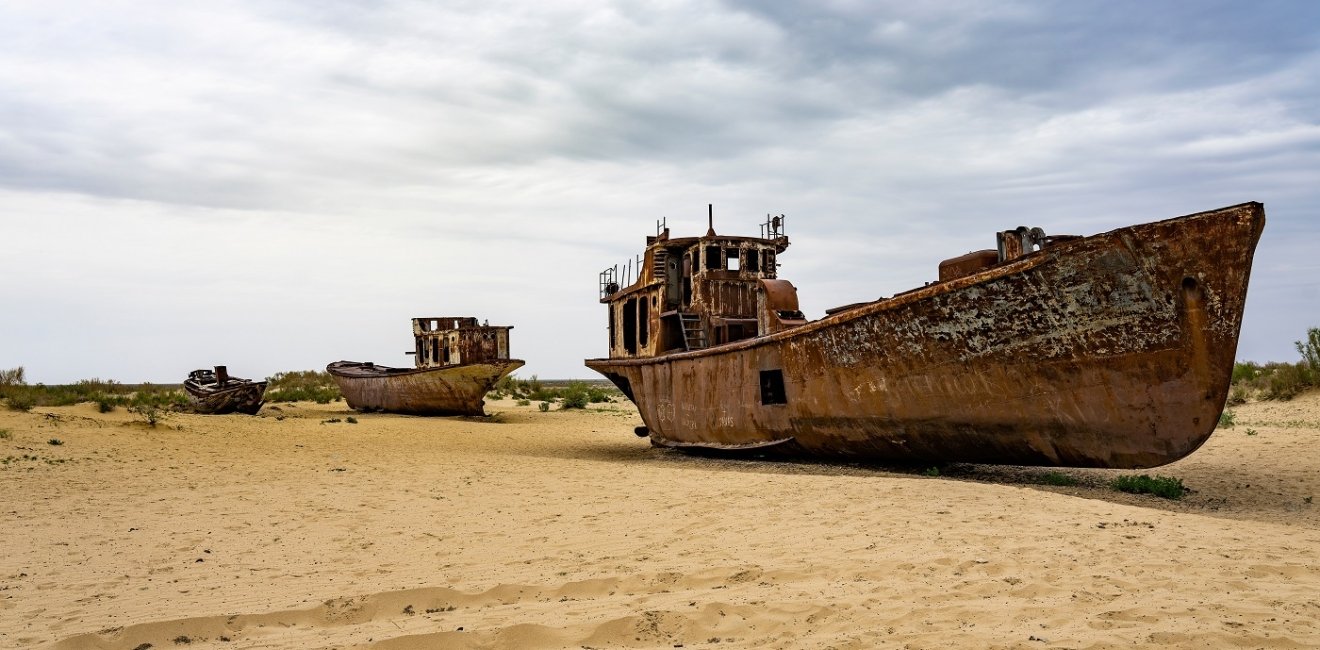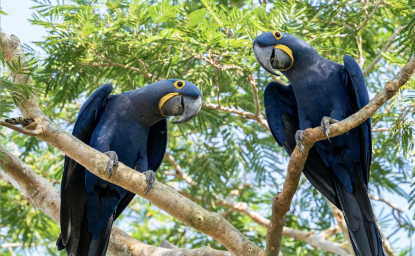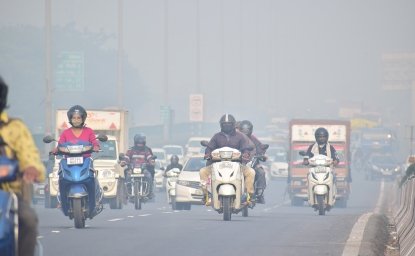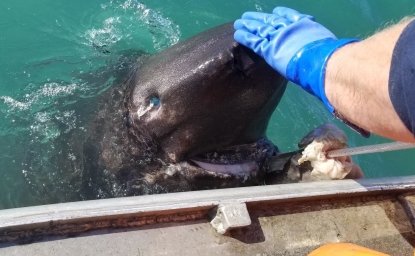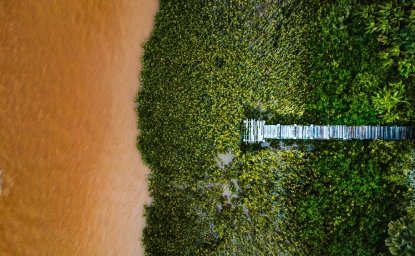Q: Describe your background and what brought you to the Wilson Center.
I am a historian of Russia and Soviet Union, with particular research interests in genocide and crimes against humanity, environmental history, and the societies and cultures of Central Asia. My first tour at the Wilson Center was as a Title VIII Fellow with the Kennan Institute for nine months, from August 2011 to May 2012. That time was really important and influential for me. I made crucial connections that have helped me throughout my career, and I got valuable time to revise my dissertation into a book. That book, an account of a little-known crime of the Stalinist regime, the Kazakh famine of the 1930s, was published in 2018 with Cornell University Press as The Hungry Steppe: Famine, Violence, and the Making of Soviet Kazakhstan. I also credit my fellowship at the Wilson Center with helping me land my current position at University of Maryland, College Park. Currently, I am associate professor in the history department there.
I’m now working on a second book-length project about the disappearance of Central Asia’s Aral Sea, and I thought the Wilson Center would be an ideal place to work on it because I see the project as very policy relevant. The feedback that I have gotten and the connections that I have made with the policy community during my time here have been extremely helpful to my research.
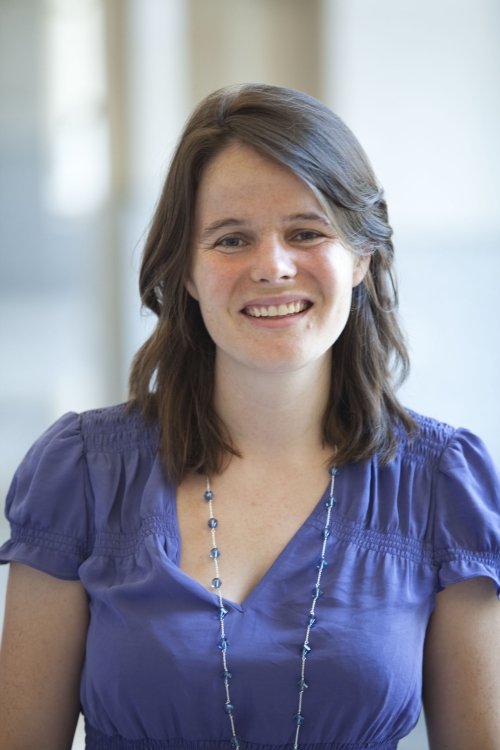
Q: What project are you working on at the Center?
I am at work on a book, Aral: Life and Death of a Sea, which offers the first complete account of the causes and consequences of one of the twentieth century’s worst environmental catastrophes, the disappearance of Central Asia’s Aral Sea. Once one of the world’s largest inland bodies of water, the Aral Sea began to shrink dramatically in the 1960s, when Soviet officials directed an increasing volume of water towards cotton production. As a result of the sea’s declining water levels, the climate and ecology of the surrounding region changed, and the people who lived near the sea began to experience a dramatic increase in health problems. The sea’s vibrant fishing industry came to a halt. Today, water levels have been partially restored in the North Aral Sea, while the South Aral Sea has continued its decline.
My book follows the Aral Sea’s transformation over the course of the twentieth and twenty-first centuries, tracing how various states from the Russian empire to the Soviet state to the independent nations of Kazakhstan, Turkmenistan, and Uzbekistan have sought to manage the sea and its environs. Geographically, it focuses on the “Priaral’e,” or the lands around the sea, a vast area that includes parts of present-day Kazakhstan, Turkmenistan and Uzbekistan.
Contrary to the conventional view of the Aral Sea as a specifically Soviet tragedy, I find that many states and international actors played a role in the disaster. Interweaving an examination of high politics with voices of the people who lived by the sea, the book underscores the urgency of finding more sustainable methods to produce cotton
The project will integrate Russian and Turkic-language sources from Kazakhstan, Uzbekistan and Turkmenistan, including archival sources and published primary sources. Oral history is also an important component of the book. I have conducted numerous interviews with residents of the Priaral’e, as well as those who have left the region (climate migration is a major theme in my work).
Q: How did you become interested in your current research topic?
My current interest in the Aral Sea comes in part from researching my first book on Kazakhstan. I heard a lot about other big historical events that had affected the country and its neighbors when I lived there. There seemed to be a great deal of interest in things like Alash Orda (a native political party that sided against the Bolsheviks during the Civil War) or Kazakhstani participation in World War II. But I had trouble finding any books by local authors on the Aral Sea. And that puzzled me since it was (and still is) such a big event for the region and its people.
My work on the Aral Sea also stems from my experiences teaching Soviet history at the University of Maryland. I really wanted to assign something about the Aral Sea to my students. It’s a major event in the Soviet and post-Soviet era. But I couldn’t find anything to assign. There are a lot of scientific articles by hydrologists, chemists, geoscientists and so on. And there are some pieces by journalists. But none of it really dealt with the history in any significant way. And none of them spotlighted the people of the region. They were top-down portraits. And that is something that I really want to correct with my project. I want to use the book to elevate Central Asian voices. This is an initiative that has only become more important in light of Russia’s war in Ukraine.
Finally, I have become increasingly interested in environmental history. My first book was in part a work of environmental history but this project moves me more explicitly into that field. I was inspired in part by the work of the Maya Peterson whose pioneering research on the environmental history of Central Asia, Pipe Dreams: Water and Empire in Central Asia’s Aral Sea Basin, opened our eyes to the possibilities of the field. In 2021, Maya passed away very unexpectedly. She is missed deeply, even as we continue to read and celebrate her work.
Q: Why do you believe that your research matters to a wider audience?
I enjoy tackling historical topics that have broad public resonance, both in Central Asia and the West. Making the history of Central Asia accessible to wider audiences, I believe, is a great way to underscore the importance of this strategic yet poorly understood region.
The Aral Sea crisis is still ongoing, and I hope my book will be of interest and use to practitioners (scientists, aid workers and others) trying to resolve the issue in the region today. The United Nations’ Intergovernmental Panel on Climate Change has predicted that Central Asia will experience warming levels higher than the global mean. In the future, the Aral Sea is likely to be at the forefront of discussions of climate change. Audiences in the US generally know little about Central Asia. But if they have heard of one issue, it’s the Aral Sea. A book on the Aral Sea, I believe, offers an opportunity to interest a broader audience in the history of this strategic yet poorly understood region.
I should also say that I understand the idea of “audience” broadly. Scholars in the United States usually understand “writing for a general audience” to mean reaching out to beyond the university to an educated, English-speaking American audience. But there are many other types of audiences out there! With my writing, I’m particularly interested in engaging audiences in Central Asia. My first book became a bestseller in the region, and I found this to be the single-most rewarding outcome of my book. Too often there is little dialogue between foreign historians writing about the region and Central Asian readers. The reasons for this divide are many. I’m interested in thinking about how certain strategies, like the translation of scholarship into the vernacular, might facilitate greater communication between these communities, which often exist as distinct intellectual worlds.
Q: What is the most challenging aspect of your research?
In contrast to other accounts of the Aral crisis, the book uses a geographic rather than a nation-centered framework. I focus on the Priaral’e, an area that today encompasses parts of three different states, Kazakhstan, Turkmenistan and Uzbekistan. Exactly how this area became broken down along national lines and what role these distinctions played in the crisis is a crucial part of what I am interested in exploring.
The multi-country nature of my study means that the research for this book is exceptionally demanding. I spend a lot of time trying to obtain research permissions. Travel is yet another hurdle. I need to conduct research in the central archives of these countries, as well as near the sea. However, distances in the Priaral’e are vast, and the transportation systems are poorly developed. It is not easy to get to the sea nor get around once you are there. But dealing with these challenges also helped me clarify parts of my argument. A major theme in my book is how the Priaral’e, a vast rural area at the meeting point of three states, came to be viewed as marginal by outsiders and how the region’s ongoing peripheralization continues to impact the Aral Sea story today.
Q: What do you hope the impact of your research will be?
There are numerous ways that I hope my book will impact the field of Russian and Soviet history, particularly as the field works to reorient itself in light of Russia’s invasion of Ukraine. Let me instead offer one practical example of what I hope my book will do: As I have mentioned, the Aral Sea crisis profoundly affected the health of people in the region, particularly women and children. But the balance of scientific research is uneven. There is a massive amount of research on the disaster’s environmental effects but disturbingly little on the impact of these climate upheavals on human health. My book will explain how and why we have ignored the human dimensions of the disaster. But I also want it to spur outrage and motivate us to act. We need to better understand the health outcomes of people in the region and take more concerted steps to improve them. This knowledge, in turn, might help us better address the health effects associated with shrinking lakes and seas elsewhere, particularly as many of those affected, like Native Americans in the United States, are also marginalized groups.
The opinions expressed in this article are those solely of the author and do not reflect the views of the Kennan Institute.
Author

Associate Professor, University of Maryland, College Park

Kennan Institute
After more than 50 years as a vital part of the Wilson Center legacy, the Kennan Institute has become an independent think tank. You can find the current website for the Kennan Institute at kennaninstitute.org. Please look for future announcements about partnership activities between the Wilson Center and the Kennan Institute at Wilson Center Press Room. The Kennan Institute is the premier US center for advanced research on Eurasia and the oldest and largest regional program at the Woodrow Wilson International Center for Scholars. The Kennan Institute is committed to improving American understanding of Russia, Ukraine, Central Asia, the South Caucasus, and the surrounding region through research and exchange. Read more

